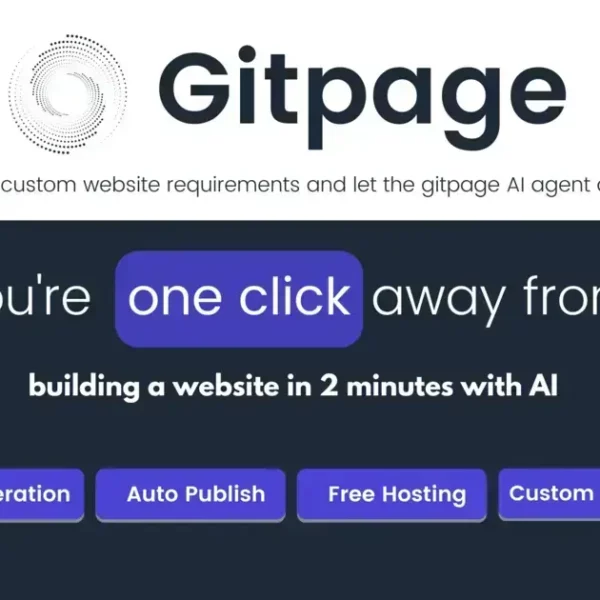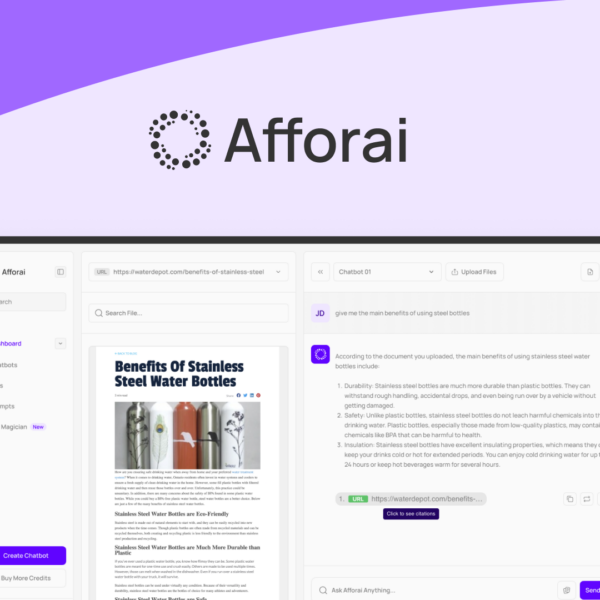In the fast-paced world of SaaS, knowing your growth metrics is crucial for success. From understanding the importance of these metrics to analyzing how various founder teams impact growth, this article will take you on a journey through the essential data driving the SaaS industry. Whether you’re a solo entrepreneur or part of a founding team, defining success requires a deep dive into your numbers. Ready to uncover actionable insights? Let’s dive in!
Understanding SaaS Growth Metrics: Why They Matter
Understanding SaaS growth metrics is key to driving your business forward. These metrics help gauge how effectively your SaaS company is performing in areas like customer acquisition, retention, and revenue growth. By examining these metrics, you can make informed decisions that will enhance your business strategy.
Key Metrics Explained
Some of the most critical SaaS growth metrics include:
- Customer Acquisition Cost (CAC): This is the total cost of acquiring a new customer, including marketing and sales expenses. Lowering your CAC means improving efficiency in gaining clients.
- Monthly Recurring Revenue (MRR): This metric shows the predictable revenue you can expect each month. Understanding your MRR is vital for forecasting growth.
- Churn Rate: This indicates the percentage of customers who cancel their subscription. A high churn rate can signal underlying issues with product value or customer satisfaction.
- Lifetime Value (LTV): This is the total amount of money a customer is expected to spend during their time with your company. A higher LTV compared to CAC indicates a viable business model.
Why These Metrics Matter
By analyzing these metrics, companies can:
- Identify strengths and weaknesses in their operations.
- Make strategic decisions about marketing and sales efforts.
- Improve customer retention strategies based on churn insights.
Additionally, understanding these metrics can help you pitch your business better to potential investors. Investors are often keen on performance indicators that show the potential for sustainable growth.
Regularly reviewing these metrics ensures that your SaaS business is on track and allows you to pivot when necessary. Metrics serve as the backbone of a data-driven strategy, guiding every decision you make to achieve lasting success.
Solo vs. Co-founders: Who Grows Faster?

The decision between being a solo founder or having co-founders is significant for SaaS growth. Both approaches come with unique advantages and challenges that can impact the trajectory of your company. Understanding these differences can help you make an informed choice that aligns with your goals.
Benefits of Being a Solo Founder
As a solo founder, you have complete control over your vision. This can lead to quicker decision-making and a clear organizational path. Here are some key advantages:
- Full Creative Control: You can execute your vision without needing to compromise.
- Speed: Decisions can be made quickly, allowing you to adapt to market changes faster.
- No Equity Sharing: You keep all profits and equity, which can be rewarding long-term.
Challenges of Solo Foundership
However, being a solo founder comes with challenges:
- Overwhelming Workload: Managing all aspects of the business can lead to burnout.
- Lack of Diverse Perspectives: You may miss out on valuable feedback from others.
- Limited Skill Sets: You may not excel in all necessary areas, like marketing or finance.
Advantages of Co-Founders
Having co-founders can provide a range of benefits that enhance company growth:
- Shared Responsibilities: Workload is distributed, allowing for a better work-life balance.
- Enhanced Skill Set: Co-founders often bring diverse skills that strengthen the company.
- Broader Network: Each co-founder typically has their own network, increasing opportunities.
Potential Drawbacks of Co-Founders
There are also challenges when working with co-founders:
- Decision-making Conflicts: Differing opinions can slow down the process.
- Equity Split: Profits and ownership need to be divided.
- Varying Commitments: Not all co-founders may be equally invested, leading to frustration.
Conclusion
Ultimately, the choice between being a solo founder or having co-founders depends on your personal goals and business strategy. Both routes have the potential for growth, but understanding the inherent advantages and disadvantages can help clarify your path forward.
Free Trials: To Ask for Cards or Not?
Offering free trials is a powerful strategy for SaaS businesses. It allows potential customers to experience the product before committing. However, a key question arises: should you require payment information upfront, or allow users to try without entering credit card details? This section explores both approaches.
Advantages of Asking for Payment Information
Requiring payment information can have several benefits:
- Higher Commitment: Users who provide their payment details are more likely to be serious about using your product.
- Reduced Churn Rate: By capturing potential customers’ payment information, you can minimize the chance that they’ll quit immediately after the trial ends.
- Immediate Monetization: Once the trial period expires, you can convert users directly into paying customers without additional steps.
Disadvantages of Asking for Payment Information
However, there are drawbacks to this strategy:
- Increased Signup Friction: Many users may hesitate to provide credit card details, leading to lower trial signups.
- Poor User Experience: Users who forget to cancel before the trial ends may feel frustrated, leading to negative reviews.
Benefits of Not Asking for Payment Information
Offering a free trial without requiring payment can also be advantageous:
- Increased Signup Rates: Users are more likely to try your product if there’s no immediate financial commitment.
- Enhanced Trust: This approach can create a sense of trust and goodwill among potential customers.
- Broader Reach: You can attract a larger audience who might be unsure about committing financially upfront.
Downsides of Not Asking for Payment Information
While this method has its benefits, it also has concerns:
- Higher Churn Rates: Users might quit after the trial without feeling obligated to continue.
- Time-consuming Follow-ups: You may need to invest time and resources in follow-up marketing efforts to convert users into paying customers.
Ultimately, whether to ask for payment information during a free trial depends on your company’s goals and customer base. Each method has potential advantages and disadvantages that should be weighed carefully.
Optimizing User Acquisition Strategies

Optimizing user acquisition strategies is crucial for the success of a SaaS business. Gaining new users efficiently means using effective methods that drive growth. Here, we will explore several strategies that can enhance your user acquisition efforts.
Understanding Your Target Audience
Knowing who your target audience is will help tailor your marketing efforts. Here are some tips to identify them:
- Conduct Surveys: Gathering feedback can reveal what potential users are looking for in a product.
- Create User Personas: Develop detailed profiles for your ideal customers based on demographics and behavior.
- Analyze Competitors: Reviewing competitors can provide insights into who their target customers are.
Leveraging Content Marketing
Creating valuable content can attract and educate potential customers:
- Blogging: Share informative articles about industry trends, your product features, and solutions to common pain points.
- Webinars: Host live sessions that educate users on how to maximize your product’s value.
- Videos: Create engaging video content that showcases product benefits and provides tutorials.
Utilizing Social Media
Social media platforms are powerful tools for user acquisition:
- Engagement: Regularly interact with your audience through comments, messages, and posts to build community.
- Targeted Ads: Use paid advertising to reach specific demographics likely to be interested in your software.
- Influencer Collaborations: Partner with influencers in your industry who can promote your product to their followers.
Implementing Referral Programs
Referral programs can encourage current users to share your product:
- Incentives: Offer discounts or benefits to users who refer others to your service.
- Easy Sharing: Make it simple for users to share links to your product via social media or email.
- Track Referrals: Use software to track which users are making successful referrals.
Analyzing Data and Feedback
Regular analysis of your acquisition strategies ensures they’re effective:
- Use Analytics Tools: Tools like Google Analytics can provide insights into user behavior.
- Monitor ROI: Keep track of how much you spend on user acquisition compared to the revenue generated.
- Gather User Feedback: Regularly ask users how they found your product and what influenced their decision to sign up.
Each of these strategies can help streamline and enhance user acquisition efforts for your SaaS business, ultimately supporting growth.
Analyzing Data for Informed Decision Making
Analyzing data is essential for informed decision-making in any SaaS business. It helps identify trends, understand user behavior, and optimize strategies. Here’s how to effectively analyze data for better outcomes.
Types of Data to Analyze
Different types of data can provide valuable insights:
- User Behavior Data: This includes how users interact with your software, including logins, features used, and time spent on the platform.
- Conversion Metrics: Tracking how many users convert from trial to paying customers provides insight into the effectiveness of your marketing strategies.
- Customer Feedback: Regular surveys and feedback forms can reveal user satisfaction and areas needing improvement.
Tools for Data Analysis
Several tools can aid in analyzing your data effectively:
- Google Analytics: This tool allows you to track user behavior on your website and gather insights into how visitors interact with your content.
- Mixpanel: Use this tool to analyze user interactions and track specific events, providing deeper insights into user behavior.
- Tableau: This visualization tool helps create interactive dashboards to present your data in a more understandable format.
Setting Key Performance Indicators (KPIs)
KPIs are measurable values that demonstrate how effectively a company is achieving key business objectives. Some essential KPIs for SaaS businesses include:
- Monthly Recurring Revenue (MRR): A crucial metric for understanding revenue trends.
- Churn Rate: Indicates the percentage of customers who stop using your service in a given time period.
- Customer Acquisition Cost (CAC): Measures how much it costs to acquire a new customer.
Making Data-Driven Decisions
To make informed decisions based on data:
- Regular Reporting: Create reports that summarize data analysis. This keeps the team informed about progress and areas needing attention.
- A/B Testing: Test different strategies to see which performs better, allowing for adjustments based on actual performance data.
- Adjust Strategies: Be prepared to adapt your strategies based on what the data shows. If certain tactics yield poor results, pivoting can lead to improvements.
By effectively analyzing data, SaaS businesses can gain a competitive edge and ensure their decisions are backed by solid evidence, paving the way for growth.
Crafting Your SaaS Success Story

Crafting your SaaS success story involves showcasing your journey, achievements, and the value your product provides. A compelling narrative can help build brand loyalty and attract new users. Here’s how to effectively craft your success story.
Identifying Key Milestones
Successful stories often highlight major milestones that showcase progress:
- Product Launch: Share the excitement and challenges of launching your product. Discuss initial feedback and adjustments made.
- Growth Metrics: Use statistics to illustrate growth, such as user acquisition rates, revenue increases, or market expansion.
- Client Successes: Highlight case studies showcasing how specific customers have benefitted from your solution.
Showcasing User Testimonials
User testimonials add credibility to your success story. Gather positive feedback from your customers:
- Highlight Impact: Focus on how your product solved a problem for the user or improved their business processes.
- Diverse Voices: Include testimonials from different types of users to illustrate your product’s versatility.
- Video Testimonials: Consider creating short video clips where users discuss their experiences.
Creating an Engaging Narrative
Your success story should be more than just facts; it should be engaging:
- Storytelling Elements: Use a narrative structure that includes a beginning, middle, and end. Describe the challenges faced, the solutions provided, and the outcomes.
- Visual Content: Incorporate images, infographics, or videos to enhance the story and make it visually appealing.
- Clear Messaging: Ensure your messaging communicates the value and mission of your SaaS business.
Utilizing Marketing Channels
Once crafted, your success story should be shared through various channels:
- Website: Create a dedicated section on your website for success stories or case studies.
- Social Media: Share snippets of the success story on platforms like LinkedIn, Twitter, or Facebook to reach a broader audience.
- Email Marketing: Include success stories in your newsletters to engage and inform your subscribers.
Sharing your SaaS success story not only highlights your achievements but also inspires trust and confidence in potential customers. It shows the real-life impact your product can have.
Conclusion: Transforming Insights into Action
Transforming insights into action is crucial for driving growth in a SaaS business. It’s not enough to just analyze data; you need to apply what you learn. Here are steps to take these insights and make them work for you.
Identifying Key Insights
Begin by pinpointing the insights that matter the most:
- Focus on High-Impact Data: Look for metrics that significantly affect your business performance, like user engagement and customer satisfaction.
- Gather Qualitative Feedback: Combine quantitative data with feedback from users to understand the ‘why’ behind the numbers.
- Track Trends Over Time: Identifying long-term trends helps in making informed decisions rather than reacting to short-term fluctuations.
Creating an Action Plan
Once you’ve identified key insights, draft a clear action plan:
- Set Specific Goals: Define what you want to achieve, such as increasing user retention rate by 15% within six months.
- Allocate Resources: Ensure that you have the manpower, tools, and budget to implement your plan effectively.
- Assign Responsibilities: Designate team members who will be accountable for various action items.
Implementing Changes
With your action plan in place, it’s time to implement changes:
- Start Small: Test changes on a smaller scale before rolling them out across the board. This reduces risk and can provide quick feedback.
- Monitor Progress: Use analytics to track the performance of implemented strategies to see if they are meeting your goals.
Adjusting Strategies Based on Feedback
Be flexible and ready to adjust your strategies:
- Regular Review Meetings: Hold frequent meetings to discuss progress and gather team input.
- Refine Based on Data: Use data analysis to decide if strategies are working and where modifications are needed.
- Stay Customer-Centric: Remain focused on customer needs and experiences, adapting strategies according to their feedback.
By continually transforming insights into actionable steps, you position your SaaS business to thrive and meet customer needs effectively.




